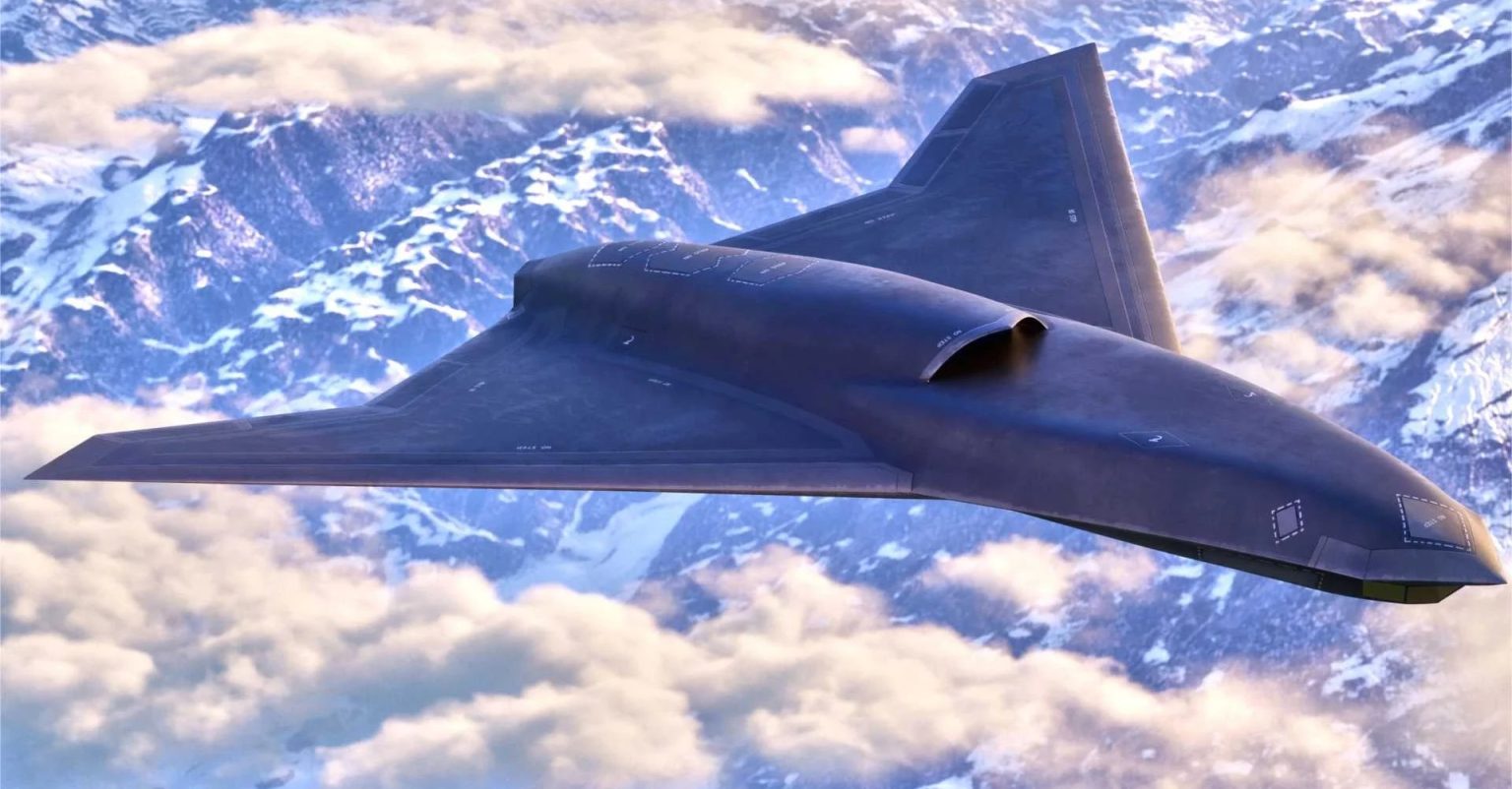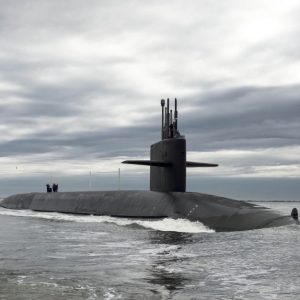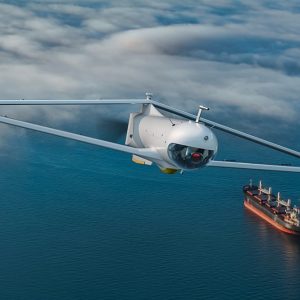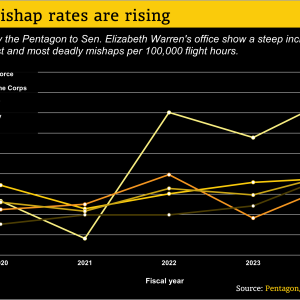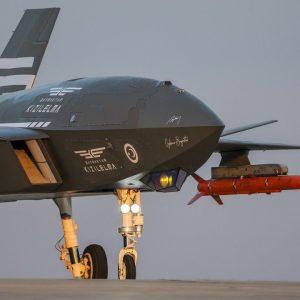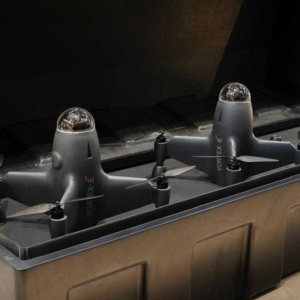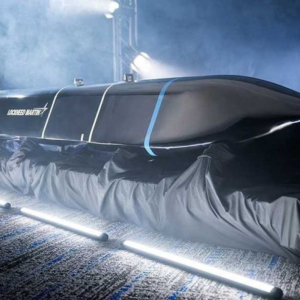Lockheed Vectis stealth CCA is now public after its reveal at the Air, Space & Cyber Conference 2025. Skunk Works says it will build and flight‑test the Group 5 aircraft within two years. The concept favours survivability and deep‑strike relevance over disposable wingman ideas. In this piece, we explain what that means for U.S. and allied air forces shaping manned–unmanned teams.

Key facts
Vectis is a Group 5, stealth‑optimised collaborative combat aircraft unveiled by Lockheed Martin’s Skunk Works at AFA 2025; first flight is targeted in ~2 years. [2][3][4]
Positioned as a survivable, multi‑role asset (strike, EW, ISR, counter‑air) rather than a low‑cost attritable wingman; designed for teaming with F‑35 and future NGAD. [2][3][10]
Open mission architecture, compliant with emerging DoD models and common control (e.g., MDCX), to accelerate payload swaps and multi‑vendor integration. [2]
Launch context: USAF CCA Increment I winners Anduril YFQ‑44 and GA‑ASI YFQ‑42 are already funded; Vectis is self‑financed and likely aimed at Increment II and allied demand. [5][6][7]
Skunk Works reenters the CCA race on its own terms
In brief, Lockheed is self‑funding to move faster than normal acquisition and to reinsert itself into the CCA narrative.
First, Lockheed Vectis stealth CCA does not follow a formal contract. Instead, Skunk Works is using internal funds, ordering long‑lead parts, and starting assembly to compress time. This reverses the view that Lockheed had exited the CCA race after Increment I went to Anduril and General Atomics. As a result, Vectis now looks aimed at Increment II, Navy teaming work, or allied procurement routes. [2][3][5]
Meanwhile, the timing matters. Air forces are reworking cost‑per‑effect in high‑end theatres. A CCA that can penetrate, escort, and deliver kinetic or non‑kinetic effects changes how commanders balance mass, risk, and redundancy. If Skunk Works keeps its two‑year pledge, Vectis will enter a crowded field with a premium, survivability‑first pitch. [3][4][10]
Architecture and missions: open by default, contested by design
At a glance, the design is open‑architecture and tuned for contested airspace, which simplifies upgrades and speeds integration.
Consequently, Lockheed Vectis stealth CCA uses a fully open mission architecture aligned to DoD reference models. This choice enables rapid payload swaps—strike, escort jamming, or ISR/targeting—without long integration delays. In addition, compliance with common control standards such as MDCX™ should ease hand‑off between today’s C2 suites and future battle management systems. [2]
Furthermore, mission roles include precision strike, electronic warfare, ISR targeting, and both offensive and defensive counter‑air. Teaming with fifth‑generation fighters is explicit. However, the design also anticipates NGAD, where a few crewed platforms direct a web of autonomous effectors. Range and endurance are being sized for Pacific, European, and Middle Eastern theatres. That reflects dispersed basing and long escort profiles. [2][3][4]
Airframe cues and survivability logic
In short, the shape and materials point to low observability with flexible bays for varied effects.
Additionally, imagery is limited. Renderings point to a tailless, blended body with internal payload volume and RAM treatments—classic Skunk Works cues. Expect passive and active apertures for multi‑spectral sensing. Also expect hardened datalinks for comms‑denied operations. Modular bays should host both kinetic and non‑kinetic payloads. The philosophy aligns with a stealth escort and strike partner rather than a throwaway truck. [2][3][4][10]
“We’re taking a survivability‑first approach to a collaborative combat aircraft—sized and built for high‑end fights—and we expect it to fly in two years.”Skunk Works leadership remarks at AFA 2025 (paraphrased from reporting).
Industrial approach: digital engineering and affordability targets
In practice, digital engineering underpins cost control, speed, and scale.
Therefore, Lockheed Vectis stealth CCA leans on digital engineering—model‑based systems engineering, digital twins, and advanced manufacturing—to cut cost and speed changes. Skunk Works says survivability can meet USAF affordability targets if the airframe, software, and supply chain scale from day one. This claim will be tested against the already‑flying Increment I prototypes. [2][6][7]
Separately, propulsion remains undisclosed. Given the endurance claims and escort missions, a high‑efficiency single‑engine layout with strong thermal and electrical margins would fit. Even so, hard details will emerge only as the flight article nears rollout. [2][4]
Where Vectis fits: Increment II, Navy teaming and allied demand
In context, Vectis aims at the next CCA wave while courting Navy teaming and allied buyers.
To recap, the U.S. Air Force’s 2024 down‑select to General Atomics and Anduril for Increment I focused resources on two paths. That left room for a different play. Lockheed Vectis stealth CCA looks tuned for that gap. A more survivable CCA can complement “missile truck” roles by taking on SEAD/DEAD, escort jamming, and forward ISR for hypersonic strike packages. In these cases, survivability and reusable mass matter most. [5][7][10]
Internationally, Vectis arrives as NATO air forces rebuild stockpiles and harden airbases against stand‑off attack. For allies flying F‑35, a teammate that speaks open standards, rides existing control frameworks, and can be fielded at scale is attractive. The same logic applies in the Indo‑Pacific, where long maritime gaps make range and resilience critical. [4][10]
Related analysis: For resilient positioning, navigation and timing at the vehicle edge—an essential prerequisite for autonomy and teaming—see our coverage of the USMC’s MARNAV Block 2 demos. (internal link) [1]
Bottom line
Lockheed Vectis stealth CCA marks a bold reentry by Skunk Works into a market that already has flight articles. If Lockheed can pair stealth and open systems with realistic cost, Vectis could become the CCA for the hardest problems in contested airspace. The next two years will show whether the idea is only elegant—or operationally decisive. [2][3][4][6]
Further reading
Breaking Defense coverage from AFA 2025 summarises the reveal and timeline. Read more. [3]
Air & Space Forces Magazine outlines how Vectis could partner with Air Force and Navy fighters. Read more. [4]
The War Zone places Vectis against Increment I’s cost‑mass thesis. Read more. [10]
Lockheed Martin newsroom announcement and assets. Read more. [2]
References
[1] Defence Agenda — MARNAV Block 2 resilient PNT demos set tone. https://defenceagenda.com/marnav-block-2-resilient-pnt-demos/
[2] Lockheed Martin — “Lockheed Martin Vectis™: Best in CCA Class Survivability,” 21 Sep 2025. news.lockheedmartin.com
[3] Breaking Defense — “Skunk Works reveals Vectis stealth drone, eyeing first flight in 2027,” 21 Sep 2025. breakingdefense.com
[4] Air & Space Forces Magazine — “Vectis: Lockheed’s new CCA wingman,” 21 Sep 2025. airandspaceforces.com
[5] Reuters — “USAF narrows list to General Atomics, Anduril for autonomous aircraft,” 24 Apr 2024. reuters.com
[6] GA‑ASI — “YFQ‑42A CCA flight testing,” 27 Aug 2025. ga.com
[7] The Aviationist — “YFQ‑42A CCA takes flight,” 27 Aug 2025. theaviationist.com
[8] Axios — “Skunk Works unveils Vectis,” 21 Sep 2025. axios.com
[9] Army Recognition — “U.S. Lockheed Martin Skunk Works unveils Vectis stealth drone,” 21 Sep 2025. armyrecognition.com
[10] The War Zone — “Skunk Works unveils Vectis,” 21 Sep 2025. twz.com

